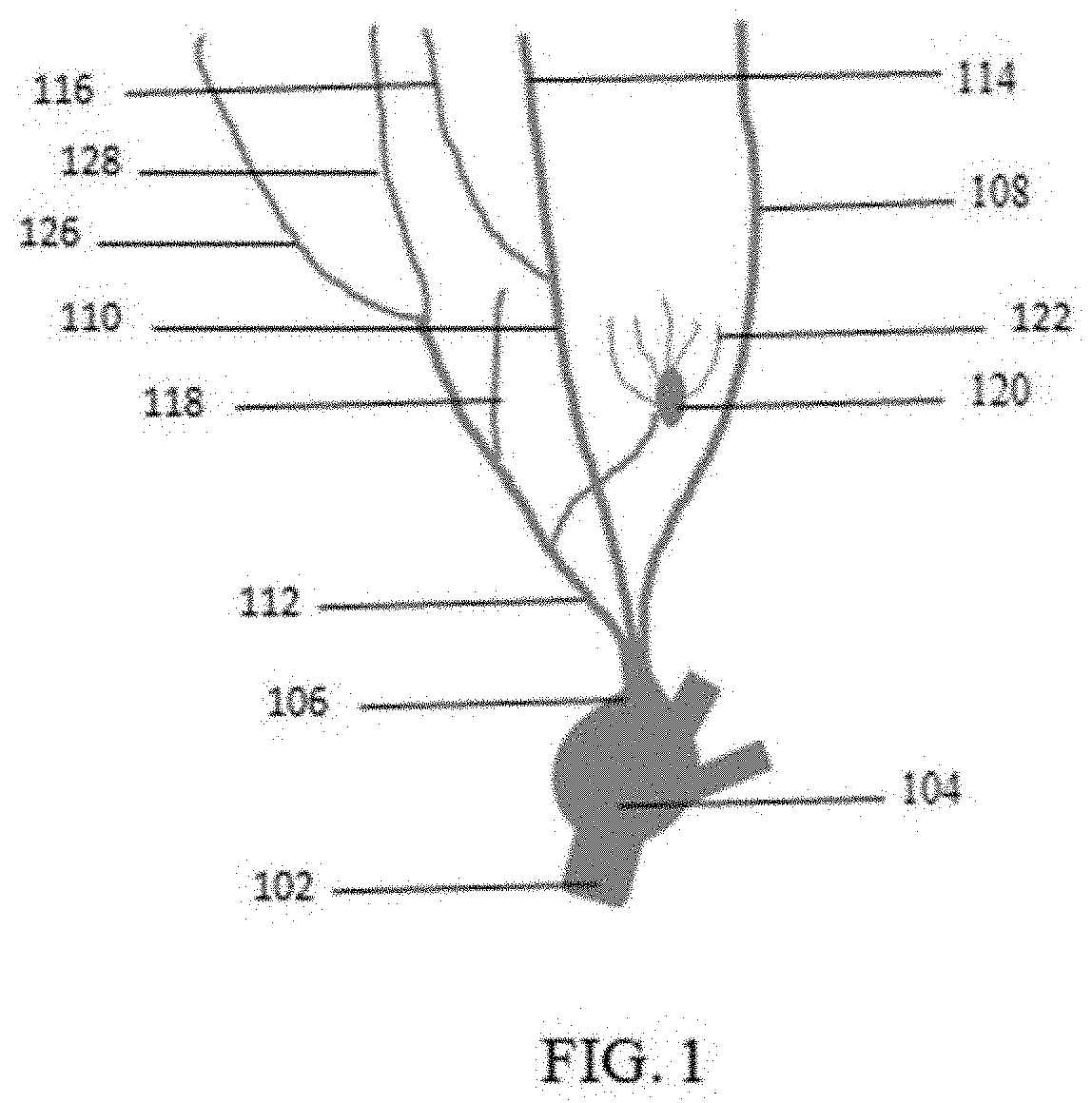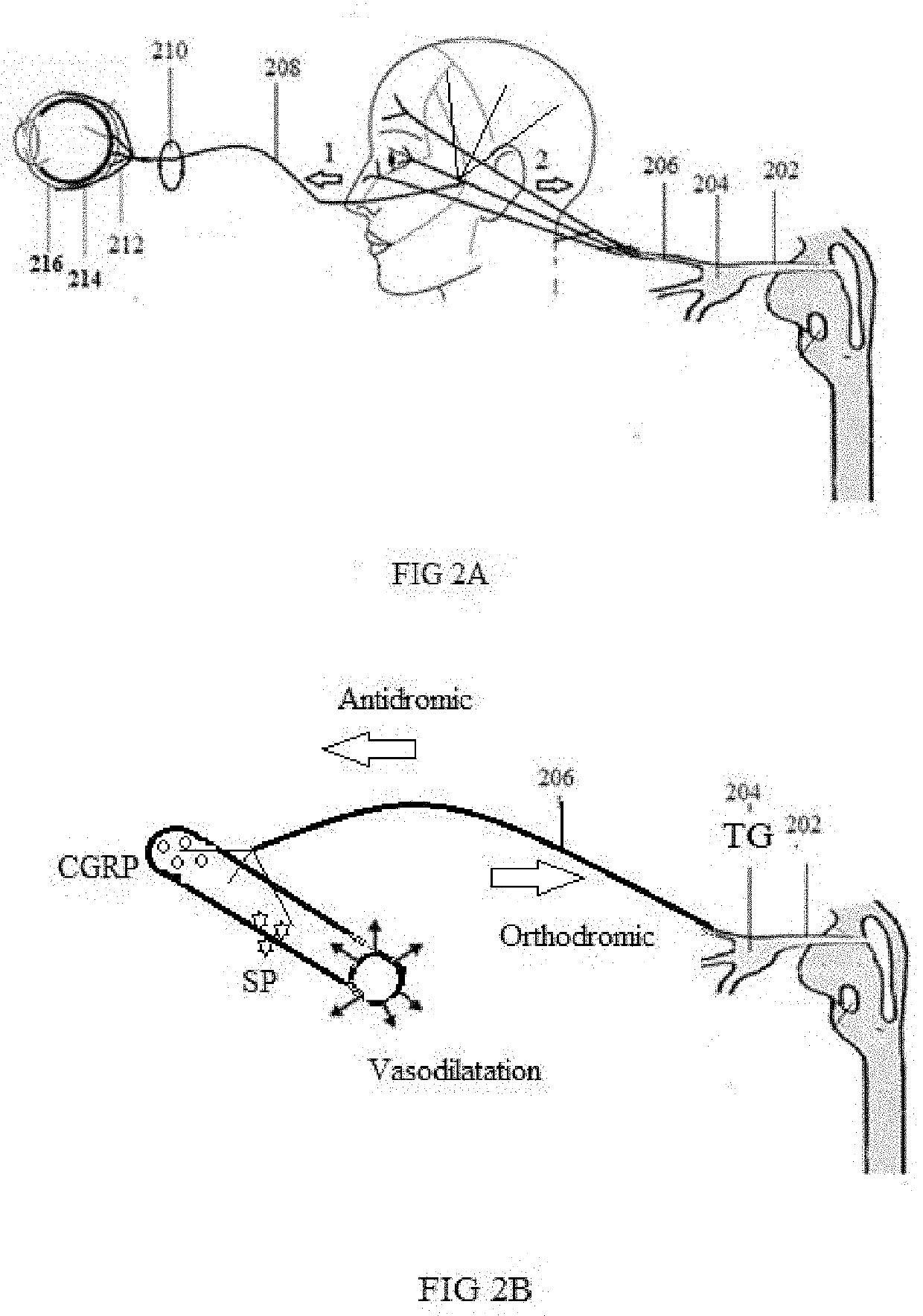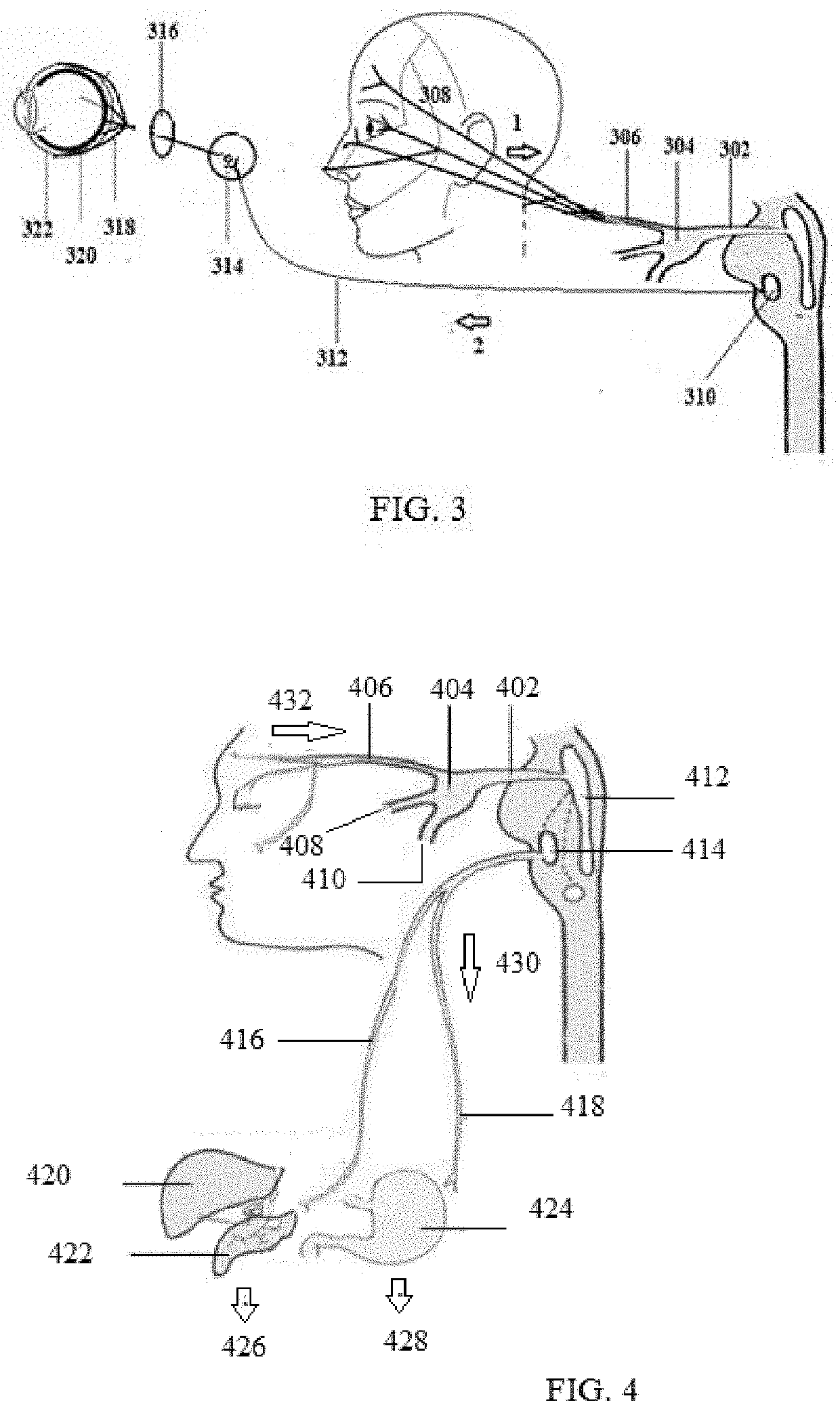Neuromodulation for treatment of brain and eye strokes and/or acute dysregulated reduced cerebral or ocular blood flow
a neuromodulation and brain technology, applied in the field of neuromodulation for treatment of brain and eye stroke and/or acute dysregulation reduced cerebral or ocular blood flow, can solve the problems of more brain parenchyma injuries, cell death, and additional brain damag
- Summary
- Abstract
- Description
- Claims
- Application Information
AI Technical Summary
Benefits of technology
Problems solved by technology
Method used
Image
Examples
specific embodiment
Description of Specific Embodiments of the Invention
[0077]In some embodiment treatment may include nerve stimulation. For example, the ophthalmic division of trigeminal nerve (V1) may be stimulated on the ipsilateral side of the stroke. Optionally, stimulation may include regulation (for example up regulation) of trigemino-vascular system (TVS) and / or trigeminal autonomic brain reflexes (TABRs) and / or pancreatic Trigemino-vagal reflex (TVR). For example, intranasal site of stimulation of V1 more specifically the mucosa of nasal septum of the vestibule is preferable site of stimulation in the present invention. Other extranasal sites for V1 stimulation include, skin of nasal bridge, and forehead. In some embodiments, the subject's TVS and / or autonomic nervous system (ANS) are modulated promptly in a manner that is effective to treat the subject for acute brain and / or eye stroke
[0078]In some embodiments, the subject's ipsilateral TVS is modulated in a manner that is effective to induc...
example 1
[0364]Intranasal Vibrotactile Stimulation: A patterned waveform of ONS is delivered intranasally, to the subjects using intranasal application head of V-ONSor 600, nasally clipped application head of portable V-ONS 800, The head of intranasal probe is introduced intranasally to come in contact of the mucosa of the nasal septum. The delivered waveform is square shaped, with frequency of 60-90 Hz, and / or amplitude of 1.5 μm-3.0 μm, with on / off periods of 4 seconds on and / or 1 second off. The session duration is 3-5 minutes on each nostril. The application head of the probe is placed in contact of nasal side ipsilateral to the side of the stroke
example 2
[0365]Nasal bridge Vibrotactile Stimulation: A patterned waveform of ONS is delivered extra-nasally, to the subjects over the side of the nose using a device as described with respect to FIG. 6, FIG. 8FIG. 9. The application head of the probe is placed in contact of nasal side ipsilateral to the side of the stroke. The delivered waveform is square shaped, with frequency of 35 Hz, and / or amplitude of 1.5 μm-3.0 μm, with on / off periods of 4 seconds on and / or 2 seconds off. The session duration is 3 minutes
PUM
| Property | Measurement | Unit |
|---|---|---|
| frequency | aaaaa | aaaaa |
| burst time | aaaaa | aaaaa |
| frequency | aaaaa | aaaaa |
Abstract
Description
Claims
Application Information
 Login to View More
Login to View More - R&D
- Intellectual Property
- Life Sciences
- Materials
- Tech Scout
- Unparalleled Data Quality
- Higher Quality Content
- 60% Fewer Hallucinations
Browse by: Latest US Patents, China's latest patents, Technical Efficacy Thesaurus, Application Domain, Technology Topic, Popular Technical Reports.
© 2025 PatSnap. All rights reserved.Legal|Privacy policy|Modern Slavery Act Transparency Statement|Sitemap|About US| Contact US: help@patsnap.com



